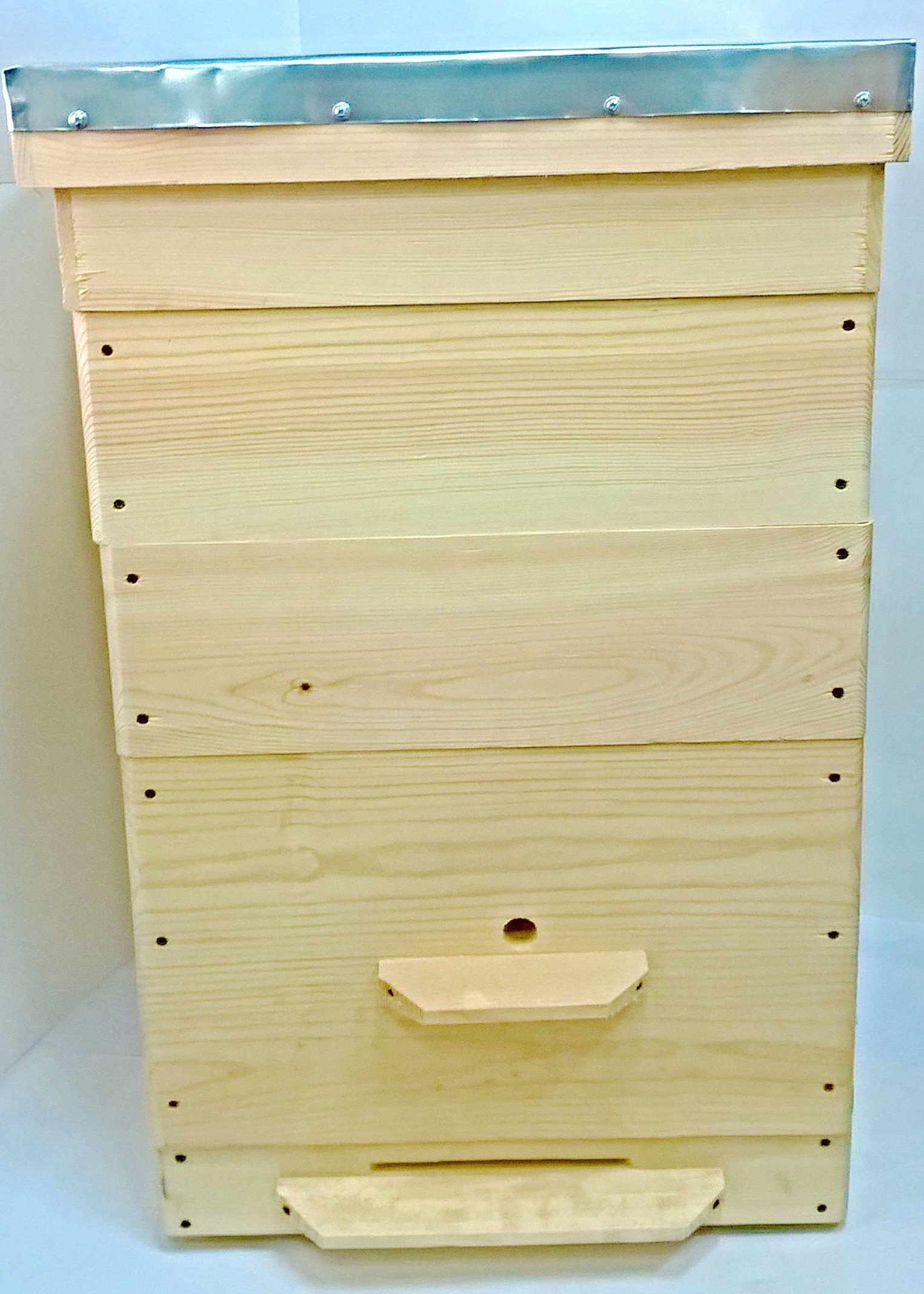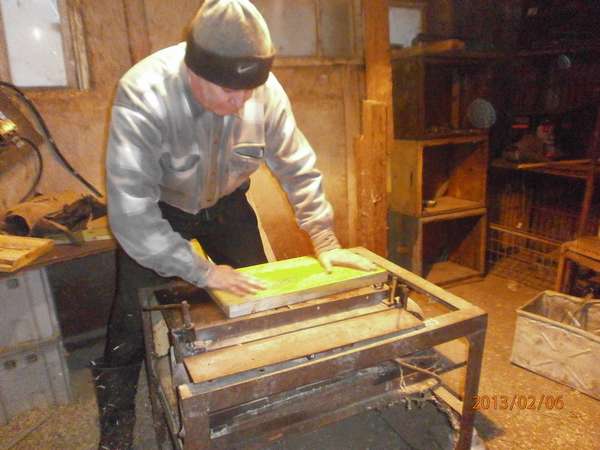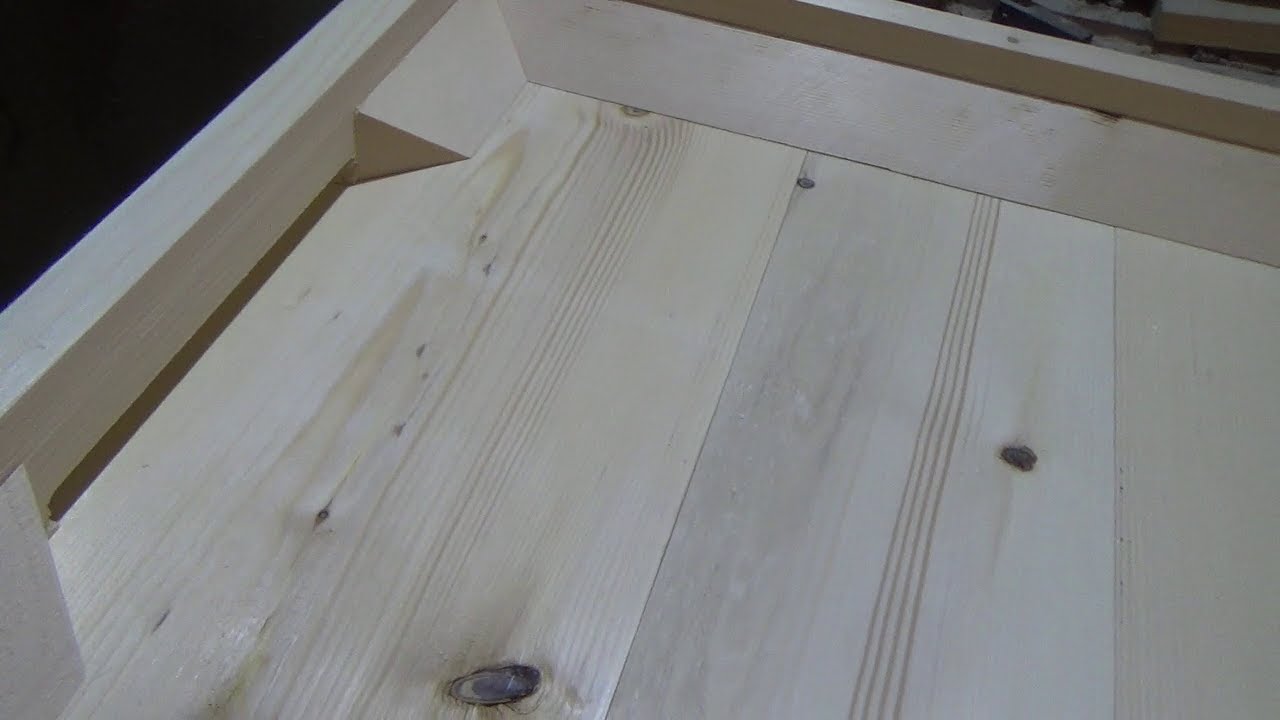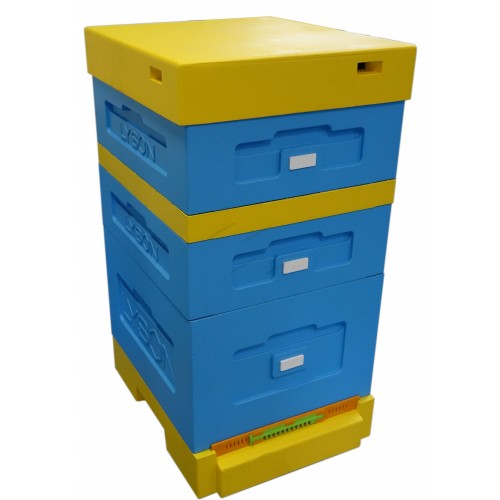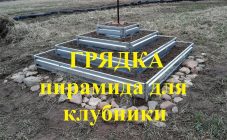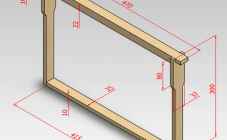Content:
The quality of honey depends not only on plants that produce nectar, but also on the comfortable living conditions of the bees (especially their winter quarters). Beekeepers are attracted by the Dadan hive of 12 frame sizes, the drawings of which make it easy to build a house with your own hands.
Dadan hive 12 frames
The French beekeeper Charles Dadant, after many years of practice, came to the conclusion that a simple small house with several vertically installed frames allows you to collect a large amount of honey.
The hive contains up to 12 nesting frames with dimensions 43.5x30.0 cm.They are inserted into special folds with parameters 1.1x2 cm.The internal area of the house is not large - it is a cube with sides of 45 cm and a height of 32 cm.
To make a beehive with your own hands, drawings 12 frame beehive provides for the following dimensions:
- for the front and rear walls, as well as the sidewalls, shields 4 cm thick are taken; their length is 45.5 cm, height - 32.5 cm;
- the height of the base should be 9 cm, the lid - 16 cm;
- the width of the frame entering the slot is 37 mm;
- a space of 25 mm is maintained under the frames, 10 mm above the frames;
- a gap of 7 mm is maintained from the side bar to the housing wall;
- if a magazine is installed below, then its height should be 16.5 mm.
Even an inexperienced beekeeper can make a bee house - there is nothing complicated in the design itself.
How to make a beehive with your own hands
Having prepared all the necessary materials, they begin to create a hive. The work is divided into stages. But first choose the right wood. It is best to take willow, linden, spruce or pine. In this case, the material must be well dried and free from signs of decay.
It is advisable to carry out all work in a room where a constant temperature and moderate humidity are maintained. Pre-stocked with accurate drawing. Despite the fact that the design of the hive is an ordinary box, the correct scheme will avoid flaws in the work.
Training:
- for a start, the boards are carefully polished;
- then the blanks are cut to the dimensions of the Dadan hive into 12 frames; a drawing to help;
- connecting grooves are formed on each part.
When all the blanks have passed the preliminary stage, they begin to make the house using the drawings of the Dadan hive for 12 frames.
Building the building:
- all joints on the wall parts are glued with a casein compound and tightly connected;
- fixation is carried out with self-tapping screws, nails or pins;
- drilled in the upper part of the front wall of the notch;
- ventilation holes are made from below;
- the bottom is similarly assembled and attached to the body;
- folds for frames are made inside; the cells in width correspond to the size of the upper bar;
- a cover is constructed, which is impregnated with a water-repellent compound before installation.
Some designs use an additional element (but not required) - a store. It is a smaller body that is inserted into the hive for storing honey produced by weak bees. The store will come in handy even with a large volume of bribes.
If you don't have a detailed plan with dimensions at hand, cracks may form when creating a structure. They will have to be caulked (putty), then sanded.
Do not leave the house without painting - this layer will protect against the negative effects of the climate and will help to additionally fill up the cracks. It is recommended to cover the outer part of the roof with roofing felt or roofing sheet, which will prevent rain from penetrating inside.
Dadan hive with removable bottom
Previously, standard hives were made with a bottom integral to the hull. Nowadays, beekeepers are increasingly preferring a removable bottom, which gives a lot of advantages in caring for bees:
- the ability to quickly clean the nest after winter;
- when manipulating the cases, you do not need to touch the frames;
- facilitates the treatment of diseased bees.
The design of the lower part of such a hive is a bottom and a removable pallet. It is connected to the main body using a folded system. This ensures quick assembly and disassembly of the bee house when wandering. Many beekeepers also use store extensions (usually there are 2 of them).
The removable bottom in the Dadanov hives should have a free space under the frames of about 25 mm. This will provide good ventilation inside the house. The front part of the bottom protrudes 50 mm in front of the body and, in fact, is an air board.
Here, with the help of inserts, an additional notch of 22x1.5 cm is formed. For the winter, the insert is replaced with another one, making a hole 12.5x0.8 cm in size. This will help keep warm and save small rodents from unwanted penetration inside.
The bottom is made of wood that has passed the chamber drying. The thickness of the bottom shield is 30 mm, the strapping is 35 mm. The main size is 52x52x7 cm, weight is 5 kg.
12-frame construction
A house for bees is structurally not particularly difficult. A twelve-frame single-frame hive is considered the simplest option, which is easy to build on your own. But this is not the only virtue for which the beekeepers fell in love with Dadan.
Design advantages:
- during the manufacture you do not need serious, precise equipment and professional tools - just take a screwdriver, circular, plane and lumber;
- provides maximum heat retention;
- in winter, bee colonies can be safely left in the Dadanovsky hive without the risk of freezing;
- there is the possibility of adding an additional family - just install a partition;
- you can extract honey without disturbing the bees - the frames are easily accessible to the beekeeper;
- the design creates comfortable conveniences for the spring development of the swarm;
- it is possible to install shops for collecting honey;
- frames allow you to collect a large amount of sweet products.
Despite the simplicity of the design, there is enough space in the house to sit comfortably. The worker bees perform their duties without interfering with the queen's egg laying. There is a place to process nectar into honey and store additional food. Even during the main flow period, insects have enough space to turn around.
For ease of movement, special sinks are made in the walls of the case. Another important element in the design is the roof liner (box-type frame). It has a multifunctional purpose: it is used to insulate the hive, place a feeder and collect bees during transportation to a nomad.
But even in such a convenient design, a "fly in the ointment" can be noted. This stops some beekeepers from using this model.
Disadvantages:
- high consumption of wood;
- the size of the 12 frame hive does not allow the installation of additional stores and the expansion of new buildings, which limits the amount of bribe in the presence of a sufficiently strong family;
- the weight of the hive itself, filled with honey, is heavy.
If we weigh all the pros and cons, then there are 12 more arguments in favor of the drawing of the Dadanovsky hive. These disadvantages are relative, you can put up with them.
Dadan hive weight with honey
For beekeepers who take out hives to the fields for the summer season, Dadan is not entirely convenient - by autumn, filled with honey, it has a significant mass. Although the structure itself without frames and a store weighs on average about 24 kg.
Each empty frame has a mass of 0.5 kg, i.e. 12 frames add another 6 kg. If it will be easy to deliver 30 kg to the flower meadow, then it is already difficult to take it back, judging by the calculations below:
- with a good season, about 5 kg of honey accumulates on one frame;
- then the total mass of the frames will be 5 * 12 = 60 kg;
- adding the weight of the hive (60 + 30), get 90 kg.
This is just one structure that needs something else to be brought back to the farm. But, on the other hand, the frame system allows you to pump honey directly at the collection point and take it out in parts.
To slightly reduce the weight of the hive, you can use lighter natural material instead of boards. High-quality plywood with proper use will last a long time.
The only drawback is that it retains heat poorly. But it can be easily eliminated - you just need to combine plywood with polystyrene, which is lined with the inner walls of the hive. Then the bees will be able to calmly winter in such a house.
Each beekeeper will decide independently about how convenient the described structures are, the presence of a detachable bottom and the possibility of using the store. For an experiment, you can start with one house to assess its advantages and disadvantages. It will not be difficult to make a Dadan 12 frame hive in size with your own hands.
